Most travellers dream of seeing Africa’s gorillas in real life, but few know what to expect once the trek begins. Back from his recent trip to Uganda, T4A co-owner Johann Groenewald reveals what this once in a lifetime encounter entails, from start to finish.
Gorilla trekking is a bucket list activity for many people. Mountain gorillas are found only in Rwanda, Uganda and the DRC and their habitat is limited. There are habituated families of mountain gorillas which tourists can visit under the careful guidance of rangers and trackers whose job it is to look after these magnificent creatures.
Mountain gorillas live in the forests found on the high slopes of central Africa. Given that the terrain is extremely difficult to access and can only be reached on foot, the description of being an impenetrable forest is quite appropriate.

Permit costs: Rwanda vs Uganda
My wife and I decided that our visit to Rwanda and Uganda would be the perfect opportunity to fulfil our dream of seeing the mountain gorillas up close. In Rwanda, the current permit price is USD1,500 per person while in neighbouring Uganda it’s USD600. Why this big discrepancy? Is the one better than the other?
Although I have not had the privilege of gorilla trekking in both countries, I have read up on the matter and spoken to guides who accompany clients. There seems to be no real difference between the two. Some argue that the trek is more severe in Uganda, but in all honesty, it depends on which area of the country you’re in. These are wild animals who move around freely and could be anywhere on the day that you want to look for them. Therefore, I can only think that the severity of the trek is based on many factors that are out of the guides’ control.
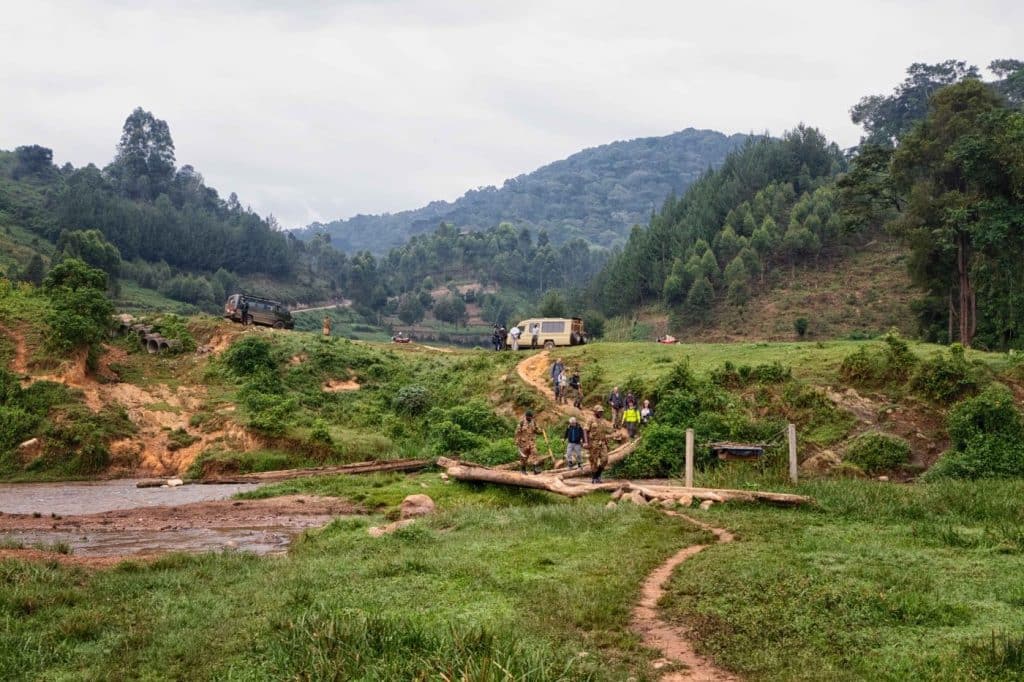
The debate will continue, and permit prices may rise before long, so it’s best to have a look at the different packages on offer and make up your own mind. At the time, cutting our ticket price in half made sense to me and we had a wonderful experience.
Also read: Road tripping through Rwanda
The trek begins
Our day started early with a short drive to the park office where we were divided into our groups and given a general briefing. Groups are kept small enough to make it easy for everyone to have a good view of the gorillas. Here, you can also decide to enlist the services of a porter. These men, who come from the surrounding villages, are not just there to carry your stuff, but also to help you up and down the mountain should it be necessary. I consider myself to be fit and strong, but the terrain is challenging so we decided to get one porter between the two of us. Being accompanied by someone who is young, strong and used to walking in these mountains every day of their life turned out to be a great help.
Some groups set off from the office on foot but because our gorilla family was in another part of the forest, we were transferred to a better starting point at the edge of the forest. The roads were slippery from the frequent rain and the going was slow.

Our guide was in radio contact with the trackers whose job it is to find the gorillas early in the morning and then lead us to them by the shortest path. We set off, crossing a small river by walking over wet logs – the first test of your balance and surefootedness. I was immediately glad I took one of the long walking sticks from the office to steady me.
Almost immediately, we started walking into the forest up a precipitous and sometimes slippery path. Our guide got word that two families were getting close to each other. When this happens, a potential conflict could cause one of the families to flee deeper into the forest. We were tracking the smaller family, so this was a real possibility. The pace was fast but our group seemed to cope very well.
How to behave around gorillas
After about an hour of hard walking, we took a brief break during which our guide explained that we were very close to the gorillas. Leaving the porters behind with our bags, we took only our cameras with us. Walking sticks were also left behind as they can be seen as weapons by the gorillas. At this point, we were given the gorilla behaviour 101 class. Basically, the rules are to respect them, keep your distance and not to make eye contact with the big guy. Don’t worry, the guides are quick to tell you again and again what to do when you are close.
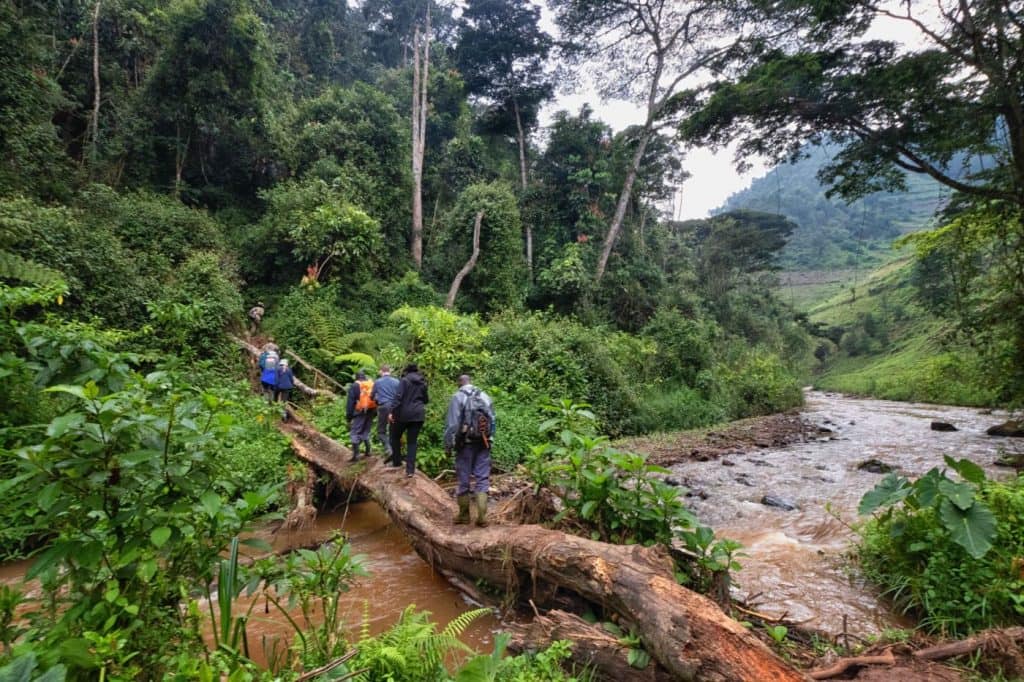
At this stage, we also left the path, which meant serious bundu-bashing was to follow. I recommend wearing gardening gloves to avoid the nettles and so that you can always grab onto something to steady yourself on the steep slopes. It is also advisable to wear boots or shoes with a good grip on wet clay and long trousers to protect your legs.
T4A tip: A poncho for the rain works better than a jacket as the poncho allows you to hide your camera as well.
Up close and personal
It was not long before we saw the gorillas. The first meeting was a bit awkward as everyone was trying to find a good spot to take pictures. We were on steep slopes and simply trying to stand still was a challenge. And if that weren’t enough, the rains started to pour as well!
The gorillas are lazy and tend not to move much, but when they do it is with absolute ease that they traverse this impenetrable terrain. Our motley crew followed.
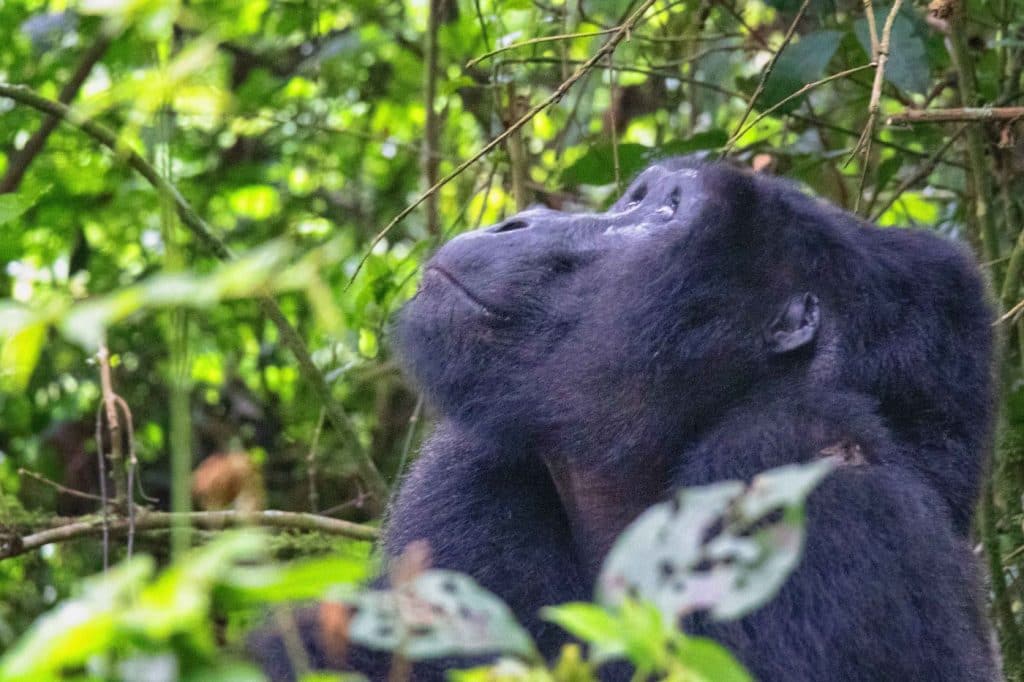
Our family consisted of a big silverback, some females and two youngsters. Where the silverback was downright massive and impressive to see, the little ones were playful and even tried to come towards our group. At one stage, a youngster was showing us how to make a bed out of branches. He rolled onto his back before walking up to one of the people in our group, only to swing around his legs and take off into the trees. When this happens, the guides are on high alert as visitors should retreat to keep a safe distance. Luckily, the little ones move away just as fast as they approach.
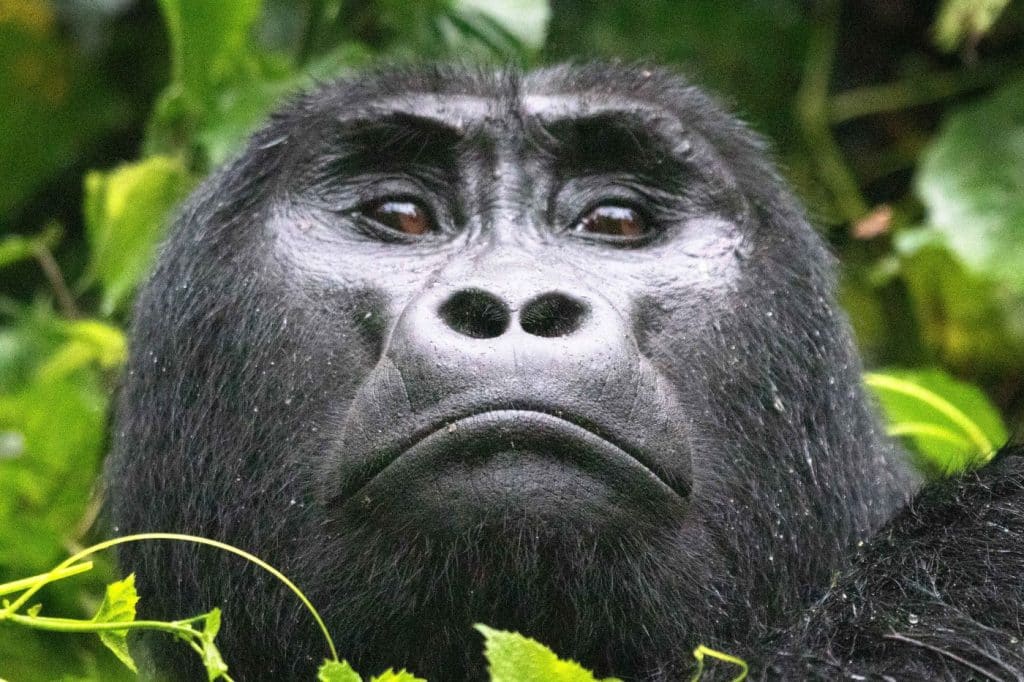
We were allowed an hour of observation, which flew by. Because the gorillas moved around, everyone in our group had a chance to see them up close for that perfect photo opportunity. Keep in mind that the light is not always great in the forest. Luckily, in our case, the rain subsided and we had some good light towards the end.
Also read: discovering fertile Uganda
Photographers, take note that your equipment will get wet and that walking through the forest will involve plenty of falling, slipping and banging-against-a-tree moments.
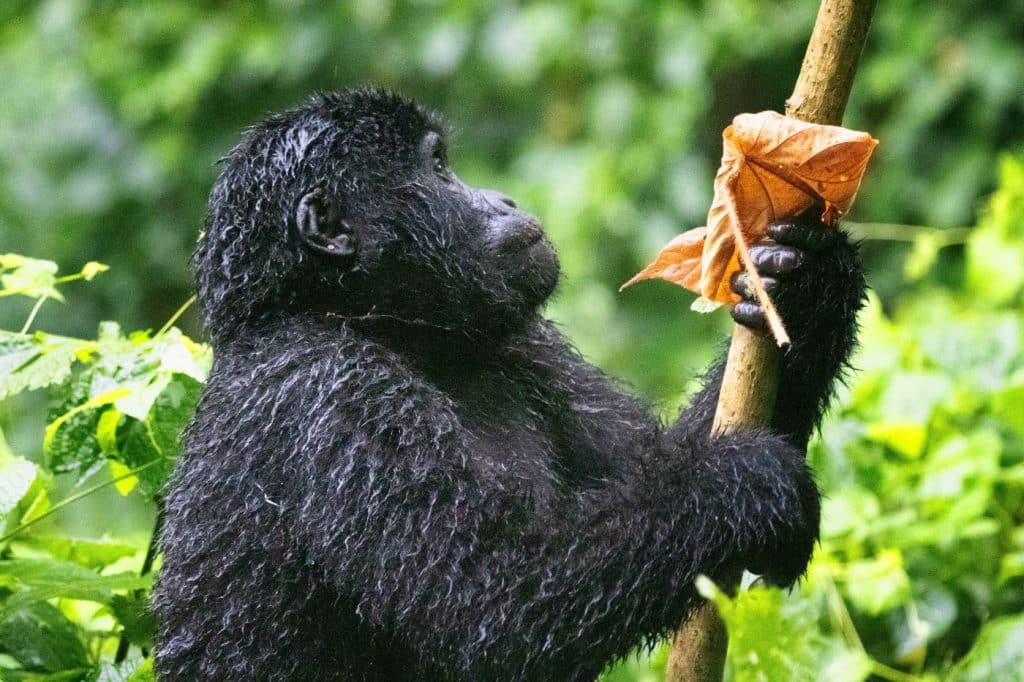
The way back
The walk back was strenuous as we first had to connect to a path. But even the paths are difficult to walk on as the surface has been worn down to nothing but clay and roots.
Close to the edge of the forest we encountered a forest elephant. We were told that these animals are not very happy to see people in their territory so we moved with absolute caution. I was at the back of our group when the ranger unexpectedly fired off a shot into the air to scare off the elephant. Apparently, this was normal, but I could not help but wonder where that bullet landed.
Back at our vehicles we all looked a lot more muddy and wet than a few hours before. Our group had hiked well, and our guide told us that some people come out of the forest on the bush ambulance – a stretcher carried by several men. I cannot think how uncomfortable that would be on these slopes and potentially how many times you would be dropped on the ground. But it is all too easy to hurt an ankle in this forest. I would not discourage the unfit from doing the trek but be warned that it is no walk in the park. You will work hard for this once in a lifetime experience.
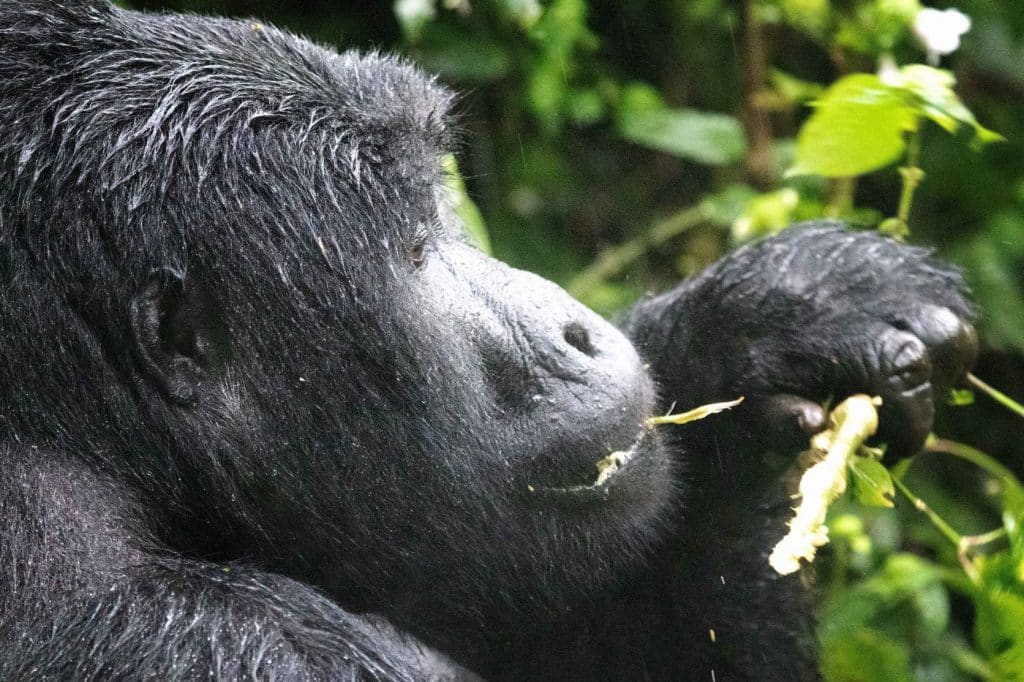
The verdict
Is it worth the money though? That I cannot answer for anyone else. I felt exceptionally privileged to see these majestic animals in their natural habitat. The trek through the beautiful forest itself is also a great experience, and just making the trip into the mountains and back has left me with a feeling that I have experienced something extremely special.
For many, the cost of the permit would be prohibitively expensive but looking at the villages around the forests I can see why there must be a good financial incentive to the government and the communities to protect the habitat in which these last survivors can thrive. Price is what you pay, value is what you get. I felt that I got good value.
Headed to Uganda? Our East Africa GPS map gives you detailed coverage to help you find your way. Get it here.
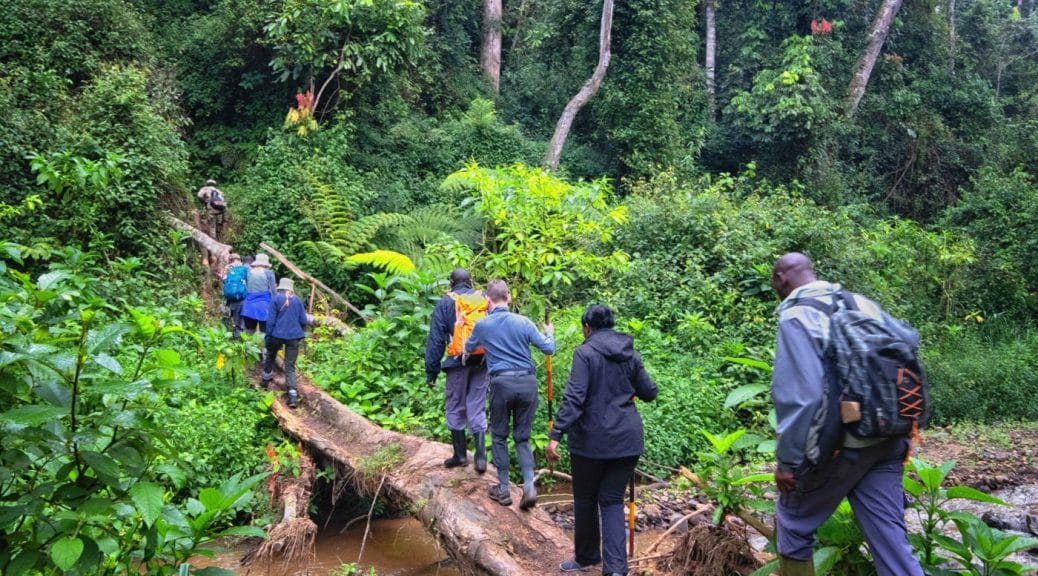

We went on an Africa Geographic trip in June to see gorillas and other primates. The reason it is so much more expensive in Rwanda is because the pressure to see the gorillas in Rwanda, which to Westerners seems so much safer and easily accessible, became so intense. The Rwandans pay 10% of your fee to the locals so it is in a good cause but not suitable for everyone’s pockets! The international rule we were told is one group of 8 tourists for one hour once a day for one family group so that severely limits the number of people who can view the gorillas – but the trackers have to stay with the gorillas all day in order to protect them and to keep them habituated – an expensive exercise. So although we landed in Kigali we immediately drove to Mgahinga National Park in Uganda. The gorilla family was not 10 minutes from the head office – an incredible experience! We then returned to the Volcanoes National Park to see the golden monkeys and then to DRC to see the lowland gorillas in Kahuzi-Biega National Park – it took longer to find them but it was again one of my most rewarding experiences ever! Back to Rwanda to see chimpanzees and colobus – all of this in the course of 8 days which included stays around Lake Kivu and a visit to the genocide memorial. I do want to emphasise that EVERY ONE of the rangers in all 3 countries were amazing and seemed to care personally about the gorillas. Although Uganda appeared to be poor and disorganised and DRC was chaotic we were taken thorough care of by the AG people in charge and will never forget a single day of our trip. DON’t be put off by ebola scares or by fear of any kind – go and enjoy it!
Just to add, there are no mountain gorillas in captivity anywhere in the world. The ones you may see in zoos are low-land gorillas, not mountain gorillas. So if you want to see these majestic animals – your only option is to see them in the wild like this.